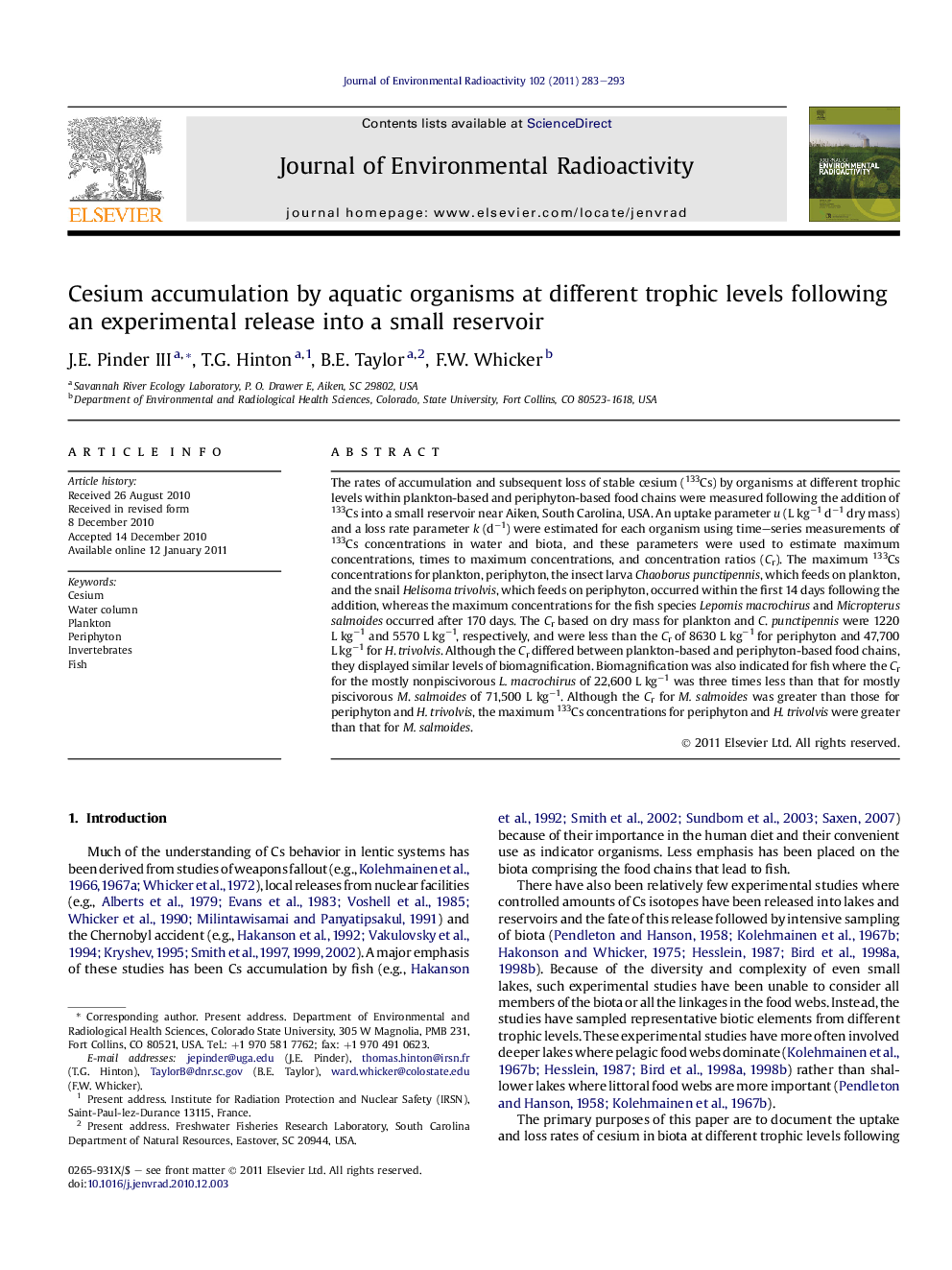| کد مقاله | کد نشریه | سال انتشار | مقاله انگلیسی | نسخه تمام متن |
|---|---|---|---|---|
| 1738805 | 1016815 | 2011 | 11 صفحه PDF | دانلود رایگان |

The rates of accumulation and subsequent loss of stable cesium (133Cs) by organisms at different trophic levels within plankton-based and periphyton-based food chains were measured following the addition of 133Cs into a small reservoir near Aiken, South Carolina, USA. An uptake parameter u (L kg−1 d−1 dry mass) and a loss rate parameter k (d−1) were estimated for each organism using time–series measurements of 133Cs concentrations in water and biota, and these parameters were used to estimate maximum concentrations, times to maximum concentrations, and concentration ratios (Cr). The maximum 133Cs concentrations for plankton, periphyton, the insect larva Chaoborus punctipennis, which feeds on plankton, and the snail Helisoma trivolvis, which feeds on periphyton, occurred within the first 14 days following the addition, whereas the maximum concentrations for the fish species Lepomis macrochirus and Micropterus salmoides occurred after 170 days. The Cr based on dry mass for plankton and C. punctipennis were 1220 L kg−1 and 5570 L kg−1, respectively, and were less than the Cr of 8630 L kg−1 for periphyton and 47,700 L kg−1 for H. trivolvis. Although the Cr differed between plankton-based and periphyton-based food chains, they displayed similar levels of biomagnification. Biomagnification was also indicated for fish where the Cr for the mostly nonpiscivorous L. macrochirus of 22,600 L kg−1 was three times less than that for mostly piscivorous M. salmoides of 71,500 L kg−1. Although the Cr for M. salmoides was greater than those for periphyton and H. trivolvis, the maximum 133Cs concentrations for periphyton and H. trivolvis were greater than that for M. salmoides.
Research highlights
► A simple uptake and loss model described the Cs dynamics in all the various biota.
► Concentrations of Cs were greater in periphyton than in plankton.
► Biota other than fish demonstrated the greatest maximum Cs concentrations.
► Concentration ratios were generally consisted with those expected.
► Concentration ratios indicated biomagnification across trophic levels.
Journal: Journal of Environmental Radioactivity - Volume 102, Issue 3, March 2011, Pages 283–293